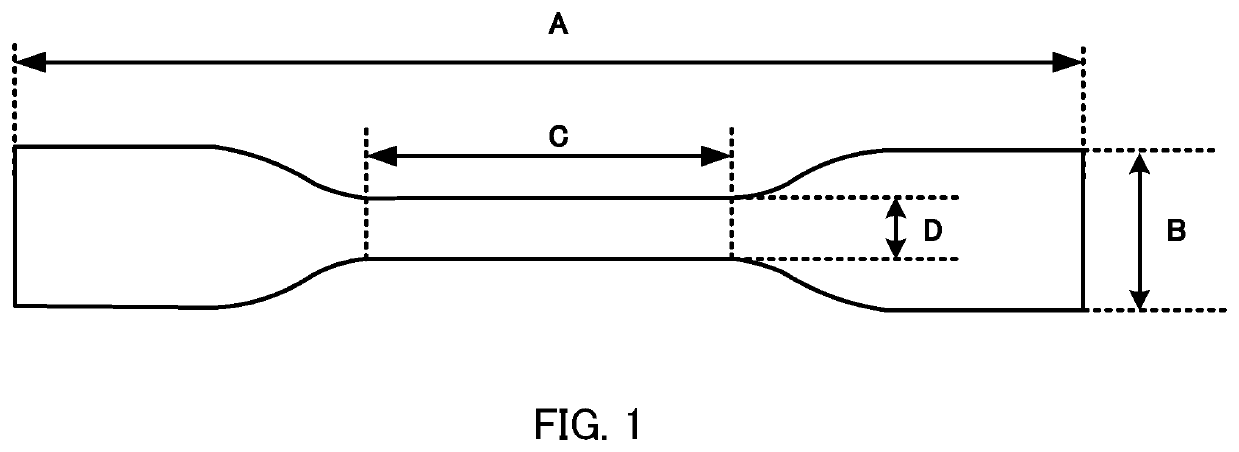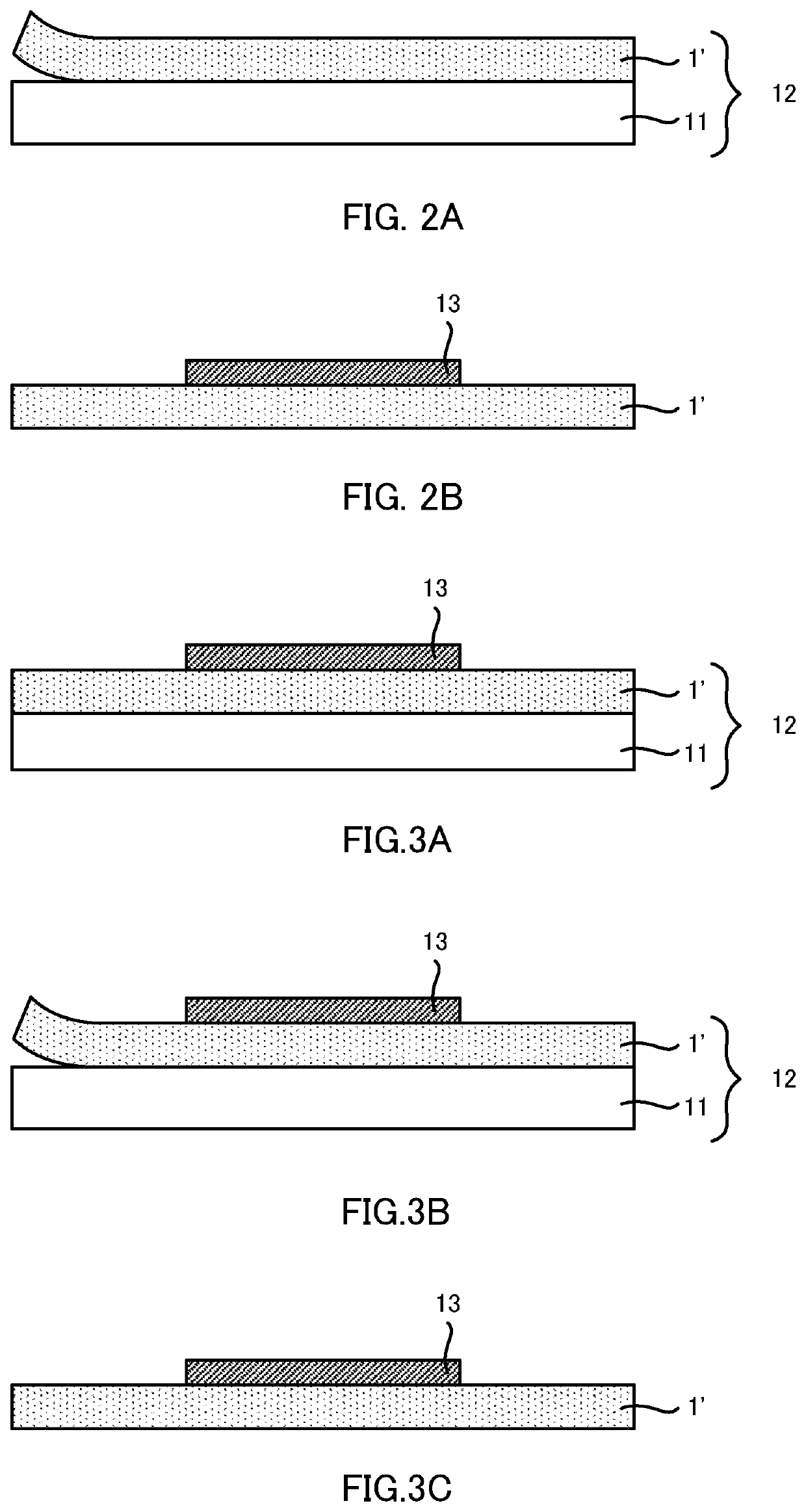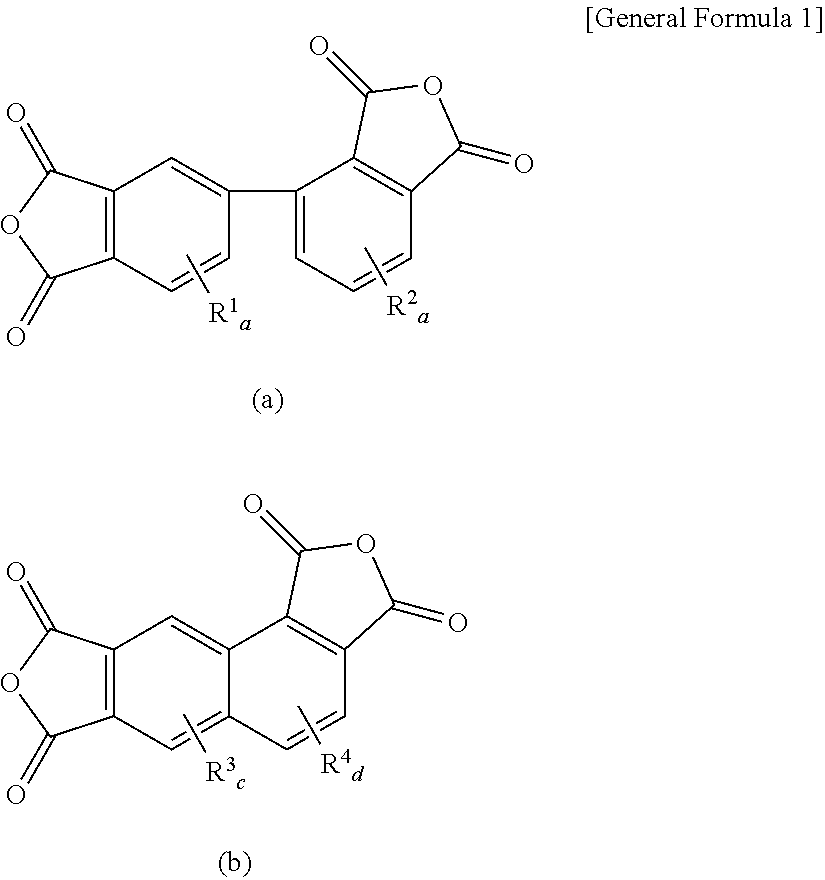Polyamic acid, varnish containing same, film, touch panel display, liquid crystal display, and organic el display
a technology of polyamic acid and varnish, applied in the direction of coatings, etc., can solve the problems of low flexibility, low shock resistance, high specific gravity (weight) of organic glass, etc., and achieve the effects of low thickness-direction retardation, high tensile elongation, and high thermal stability
- Summary
- Abstract
- Description
- Claims
- Application Information
AI Technical Summary
Benefits of technology
Problems solved by technology
Method used
Image
Examples
synthesis example 1
[0172]In a flask equipped with a thermometer, a condenser, a nitrogen inlet tube, and a stirring blade, t-DACH: 7.19 g (0.063 mol), 1,4-BAC: 1.00 g (0.007 mol), and N-methyl-2-pyrrolidinone (NMP): 179.4 g (corresponding to 15 mass %) were placed and stirred in a nitrogen atmosphere to provide a homogeneous solution. The solution was charged with s-BPDA: 11.33 g (0.039 mol), a-BPDA: 4.12 g (0.014 mol), and BPAF: 8.02 g (0.017 mol) in the form of powder; heat generation occurred slowly, and the formation of a white salt was observed. The temperature of the solution was raised to allow the reaction to proceed at an inner temperature of 80° C. to 85° C. for 1 hour, resulting in a homogeneous solution. The solution was then cooled to room temperature and aged overnight at room temperature to obtain a pale yellow viscous varnish. The polyamic acid varnish obtained had an inherent viscosity: ηinh (measured with an Ubbelohde viscometer, polymer concentration: 0.5 g / dL, NMP, 25° C.) of 1.17 ...
synthesis example 2
[0173]In the same reactor as in Synthesis Example 1, t-DACH: 7.99 g (0.070 mol) and N-methyl-2-pyrrolidinone (NMP): 178.3 g (corresponding to 15 mass %) were placed and stirred in a nitrogen atmosphere to provide a homogeneous solution. The solution was charged with s-BPDA: 11.33 g (0.039 mol), a-BPDA: 4.12 g (0.014 mol), and BPAF: 8.02 g (0.017 mol) in the form of powder; heat generation occurred slowly, and the formation of a white salt was observed. The temperature of the solution was raised to allow the reaction to proceed at an inner temperature of 80° C. to 85° C. for 1 hour, resulting in a homogeneous solution. The solution was then cooled to room temperature and aged overnight at room temperature to obtain a pale yellow viscous varnish. The polyamic acid varnish obtained had an inherent viscosity: ηinh (measured with an Ubbelohde viscometer, polymer concentration: 0.5 g / dL, NMP, 25° C.) of 1.08 dL / g and a viscosity at 25° C., as measured with an E-type viscometer, of 34,000 ...
synthesis example 3
[0174]In the same reactor as in Synthesis Example 1, t-DACH: 4.11 g (0.036 mol), BAFL: 1.39 g (0.004 mol), and N-methyl-2-pyrrolidinone (NMP): 74.3 g (corresponding to 20 mass %) were placed and stirred in a nitrogen atmosphere to provide a homogeneous solution. The solution was charged with s-BPDA: 7.06 g (0.024 mol), a-BPDA: 2.35 g (0.008 mol), and BPAF: 3.67 g (0.008 mol) in the form of powder; heat generation occurred slowly, and the formation of a white salt was observed. The temperature of the solution was raised to allow the reaction to proceed at an inner temperature of 80° C. to 85° C. for 1 hour, resulting in a homogeneous solution. The solution was then cooled to room temperature and aged overnight at room temperature to obtain a pale yellow viscous varnish. The polyamic acid varnish obtained had an inherent viscosity: ηinh (measured with an Ubbelohde viscometer, polymer concentration: 0.5 g / dL, NMP, 25° C.) of 0.74 dL / g and a viscosity at 25° C., as measured with an E-ty...
PUM
| Property | Measurement | Unit |
|---|---|---|
| Temperature | aaaaa | aaaaa |
| Temperature | aaaaa | aaaaa |
| Temperature | aaaaa | aaaaa |
Abstract
Description
Claims
Application Information
 Login to View More
Login to View More - R&D
- Intellectual Property
- Life Sciences
- Materials
- Tech Scout
- Unparalleled Data Quality
- Higher Quality Content
- 60% Fewer Hallucinations
Browse by: Latest US Patents, China's latest patents, Technical Efficacy Thesaurus, Application Domain, Technology Topic, Popular Technical Reports.
© 2025 PatSnap. All rights reserved.Legal|Privacy policy|Modern Slavery Act Transparency Statement|Sitemap|About US| Contact US: help@patsnap.com



